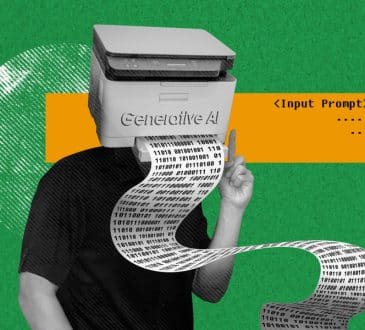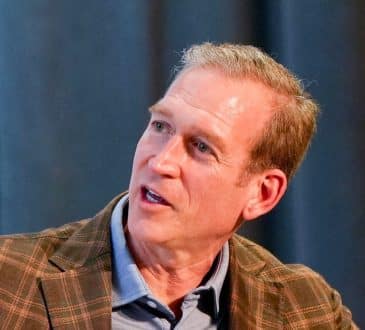Fix Our Talent Shortage by Moving Beyond the Blame Game

Employers are quick to blame talent problems on others. They say: “People are lazy. They don’t want to come to work.” Or, “Look at what schools are turning out these days. I hired a high school kid. He doesn’t know anything.”
What’s surprising about this mindset is that we are business leaders who clearly got into business because we could solve some kind of problem that no one else was solving, or that we could do better. We’re problem-solvers! But we don’t think like problem-solvers regarding our talent.
The blame game never solves problems. But approaching our talent shortages with a no-blame attitude will.
One of my favorite examples that illustrates this point is Ruth Jones-Hairston, who spent 30 years in the Grand Rapids Public school system. As a principal, she was nationally known for improving student outcomes. She recognized that the mission of her school was to educate students, but she also recognized that some of those kids were showing up hungry, often dirty, and with inadequate shoes. So she started what she called “the grandchild perspective.”
If this were your grandchild, she would ask, what would you do? And she took action. She installed washing machines and dryers. She connected with local nonprofits to provide clothes. She reached out to community donors to provide breakfasts.
Some teachers rebelled, saying it wasn’t their job to ensure students were fed and clothed properly. Jones-Hairston said, you’re right, it’s not. Our job is to educate. But all these things hinder us from doing our job, so we’ll fix the barriers. Don’t blame anybody. Just fix it.
I say we take a page from the late Ruth Jones-Hairston’s book and, as employers, leaders, and problem-solvers, we stop blaming others for our talent problems. As soon as we point the finger, we abdicate our ability to solve this problem for our enterprises. We’re acting like victims.
If instead we realize that the growth of our employees is intimately tied to the development of our businesses and communities — and create opportunities for that growth — we can drive change that will fix our talent shortages.
Committing to a better, more proactive way to fix our talent shortages than playing the blame game entails:
- Connect with employees and potential hires to learn their career aspirations.
When we take the time to better understand the hopes and dreams of the people we employ – or will potentially employ — we can be facilitators of career pathways. For example, if their starting point is a receiving clerk, but they hope to become a dispatcher, charting out the path to get there, whether internally or elsewhere, provides them encouragement and upward momentum. Resources are available to assist with this. For example, The Manpower Group’s My Path platform shares information on skills needed, expected salaries, and job potential. - Provide opportunities to upskill employees.
A McKinsey report concludes that automation will lead to widening disparities between “high-wage workers and everyone else.” Recognizing that the future workforce is inadequate to do the work we will need them to do if we’re to continue to grow and be competitive, we can’t afford not to commit to developing our teams. Creating opportunities for growth by offering educational programs provides our people with resiliency, stability, and agility, thereby making our enterprises and communities more resilient, stable, and agile.Some employers worry that if they offer marketable training to employees, they’ll leave or demand higher wages. But experts say there tend to be net positive benefits. A cartoon I once saw showed a CFO asking a CEO, “What if we train them and they leave?” and the CEO replies, “What if we don’t train them and they stay?”
- Find collaborative partners to strengthen the workforce.
Finding ways to better recognize and collaborate with potential partners from government, education, and the nonprofit community can help assist with talent issues in today’s fast-changing landscape.Let me explain by offering up my own example: To address workforce challenges in my business, Butterball Farms, Inc., I formed The SOURCE, a network that brings together nonprofit, government, and private interests to leverage existing assets for strengthening the community’s workforce. We now have 25 member companies covering 10,800 people. Through the support systems we’ve put in place, we’ve achieved a 90 percent retention rate for those employed at a SOURCE member company and receiving welfare benefits, compared to a 57 percent retention rate for those relying on traditional caseworkers.
If we start educating in our organizations for our employees’ next jobs, if we take on some responsibility and make some investment in their well-being — and if we all do that collectively — we raise the net talent in the system, which will help us all.
Written by Mark Peters.
Have you read?
The World’s Best Medical Schools.
The World’s Best Universities.
The World’s Best International High Schools.
The World’s Best Business Schools.
The World’s Best Fashion Schools.
The World’s Best Hospitality And Hotel Management Schools.
Bring the best of the CEOWORLD magazine's global journalism to audiences in the United States and around the world. - Add CEOWORLD magazine to your Google News feed.
Follow CEOWORLD magazine headlines on: Google News, LinkedIn, Twitter, and Facebook.
Copyright 2025 The CEOWORLD magazine. All rights reserved. This material (and any extract from it) must not be copied, redistributed or placed on any website, without CEOWORLD magazine' prior written consent. For media queries, please contact: info@ceoworld.biz








